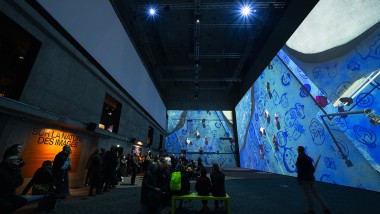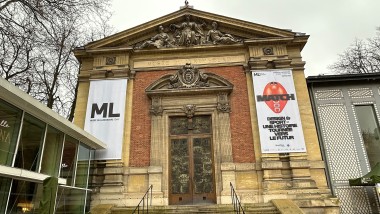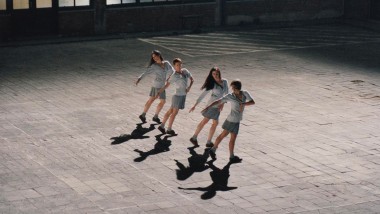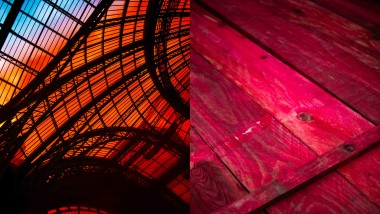
Exiles, Reminiscences and new worlds Muse?es Nationaux du XXe sie?cle des Alpes-Maritimes
Picasso, Chagall and Léger all experienced exile, at various times in history, for different reasons and with varied consequences. It was a founding experience for Chagall and Picasso, who set off for the fascinating city of Paris in the early 20th century and it spurred Léger to new heights in the United States after the Second World War.
The exhibition organised at the Musees nationaux du XXe siècle des Alpes-Maritimes, centres on these three figures, aiming to show how exile inspired many artists, particularly in the first part of the 20th century. Their migration, voluntary or forced but never indifferent, transformed their vision and profoundly altered their art. The exhibition shows how their works were affected by the abandonment of their homeland and their investment in a new country.
The musée Chagall will present some of Chagall’s reminiscent works, which hark back to his origins, alongside artists whose experience of exile was not unlike his own: Brancusi, Brauner, Kandinsky, Masson, Miró, Hantaï or Picasso...
The musée Léger will centre on Léger as a builder of new worlds, overcoming the past to look into the future, accompanied by artists with a similar frame of mind: Arp, Magnelli, Mondrian, Freundlich, Laslo Moholy-Nagy, Albers ou Schwitters (Merzbau, reconstruction by Peter Bissegger in 1988 from the Sprengel Museum photography,1933, Hanovre)…
At the musée Picasso in Vallauris, the work of the artist Melik Ohanian will prompt an exploration of what it means to be an exile today. It is perhaps harder than it ever was not to think about the condition of the exile.
Stranded briefly in Martinique where the cargo Capitaine Paul-Lemerle was held up longer than planned on the orders of the Vichy government, André Breton went on an excursion in the forest of Absalon with Lam and Masson, guided by Aimé Césaire. Afterwards he remembered Rousseau’s Martinique charmeuse de serpents, now knowing better than before his exile in the Americas: “wherever we are condemned to live, we are not totally limited to the landscape from our window (…)”
Curators
Maurice Fréchuret, director of the Musées nationaux du XXe siècle des Alpes-Maritimes
Laurence Bertrand Dorléac, art historian, Sciences Po Paris
Assistant curators
Diana Gay, curator, Musée national Fernand Léger
Nelly Maillard head of collections, Musée national Fernand Léger
Elisabeth Pacoud-Rème, head of collections, Musée national Marc Chagall
Useful information
Musée national Marc Chagall
avenue Docteur Ménard
06000 Nice
+33 (0)4 93 53 87 20
www.musee-chagall.fr
Open
Every day except Tuesdays, from 10 a.m. to 6 p.m. (5 p.m. from 1 November)
Musée national Fernand Léger
chemin du Val de Pome
06 410 Biot
+33(0)4 92 91 50 30
www.fernandleger.fr
Open
Every day except Tuesdays, from 10 a.m. to 6 p.m. (5 p.m. from 1 November)
Musée national Pablo Picasso, La Guerre et la Paix, Vallauris
place de la Libération
+33 (0)4 93 64 71 83
www.musee-picasso-vallauris.fr
Open
Every day except Tuesdays from 10 a.m. to 12 :15 a.m. and from 2 p.m. to 6 p.m. (7 p.m. from 15 September) ; from 1 July to 31 August from 10 a.m. to 7 p.m.


Design goes the extra mile for sport! The trailer for the next exhibition at the Musée du Luxembourg
Article - 11 March 2024
‘Rosas Danst Rosas', A contemporary dance by Anne Teresa De Keersmaeker in response to Stein
Article - 24 January 2024

